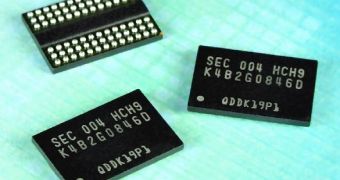Just a short time ago, we mentioned how DRAM sales were going to suffer because of tablets, and iSupply seems to have figured out just how the overall memory market will fare throughout 2011.
Basically, the worldwide DRAM (dynamic random access memory) market will see a double-digit decline by the end of the ongoing year.
While in 2010, revenues reached $40.3 billion, 2011 will return only about $35.5 million, according to forecasts, meaning a drop of 11.8 percent.
This will, ironically, come after 2010 brought about a jump of 77.5 percent over 2009, although, true enough, 2009 was a particularly difficult year.
Regardless, this year will see DRAM suffering from decreased ASPs (average selling prices), even with all the growth opportunities provided by emerging markets.
All in all, what happens in this segment depends fully on how the game console, desktop and laptop markets develop, although it is quite certain that prices won't be doing too well.
“After the boom year of 2010, the DRAM market is waking up to 2011 with a hangover,” said Mike Howard, senior analyst for DRAM and memory at IHS.
“With supply exceeding demand, pricing will decline precipitously for the year, causing revenue to decrease.”
Of course, as there is always a silver lining, the troubles looming on memory makers' horizon can be seen as a fortunate development for consumers.
For example, 2 GB modules are less than half as expensive as six months ago and, overall, it has become quite easy, from a financial standpoint, to equip systems with more memory than before.
“While bad news for suppliers, the retreat in the DRAM ASP augurs well for consumers,” Howard said.
“The price of a 2GB module currently is less than half its level six months ago, a development sure to lead to higher DRAM content in PCs for 2011 and provide consumers with more memory per machine.
“Furthermore, the new predominant memory configuration in 2011 will be 4GB, to be loaded in half of all desktop PCs, with 2GB systems declining to just 6 percent of the total market by the end of the year.”

 14 DAY TRIAL //
14 DAY TRIAL //